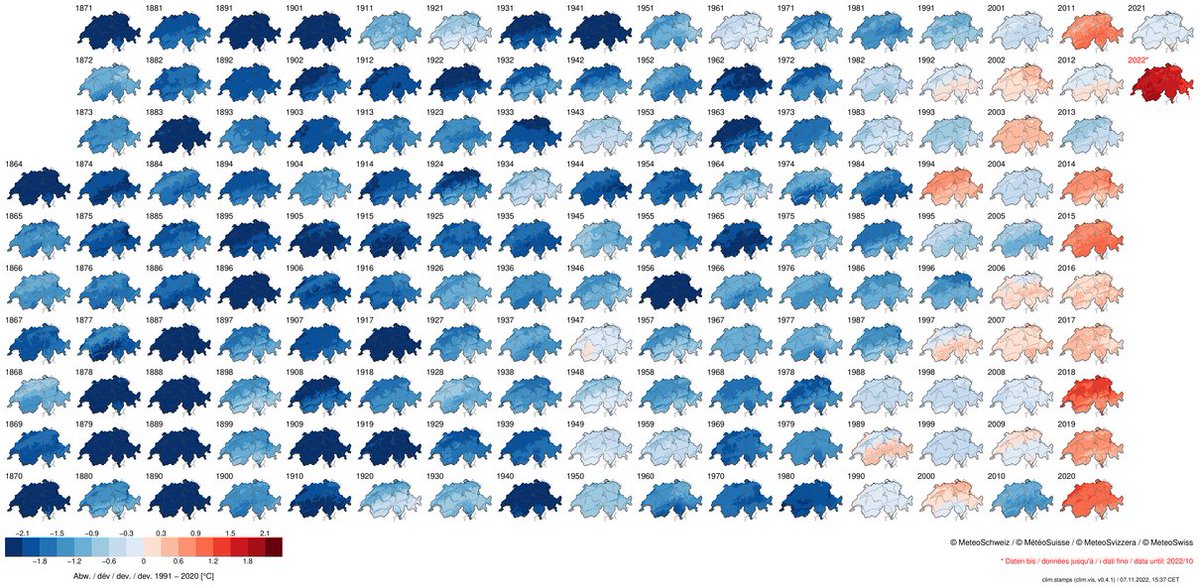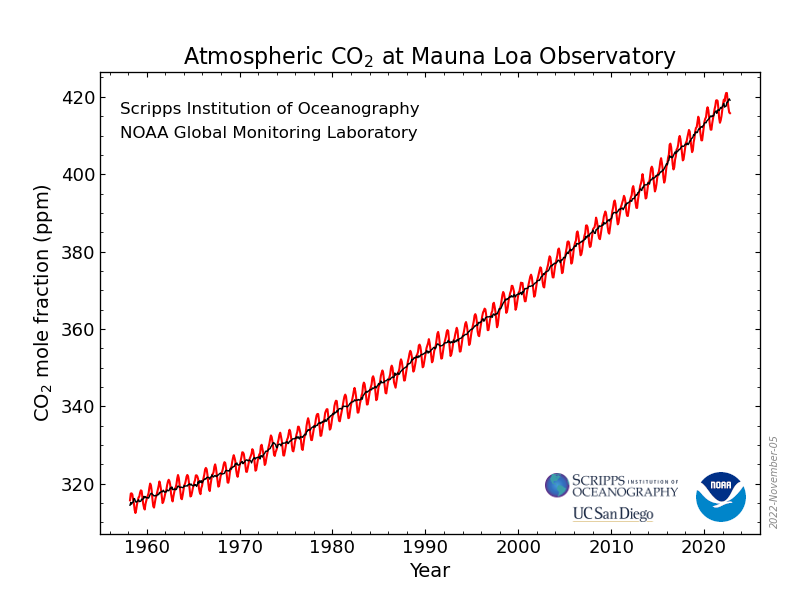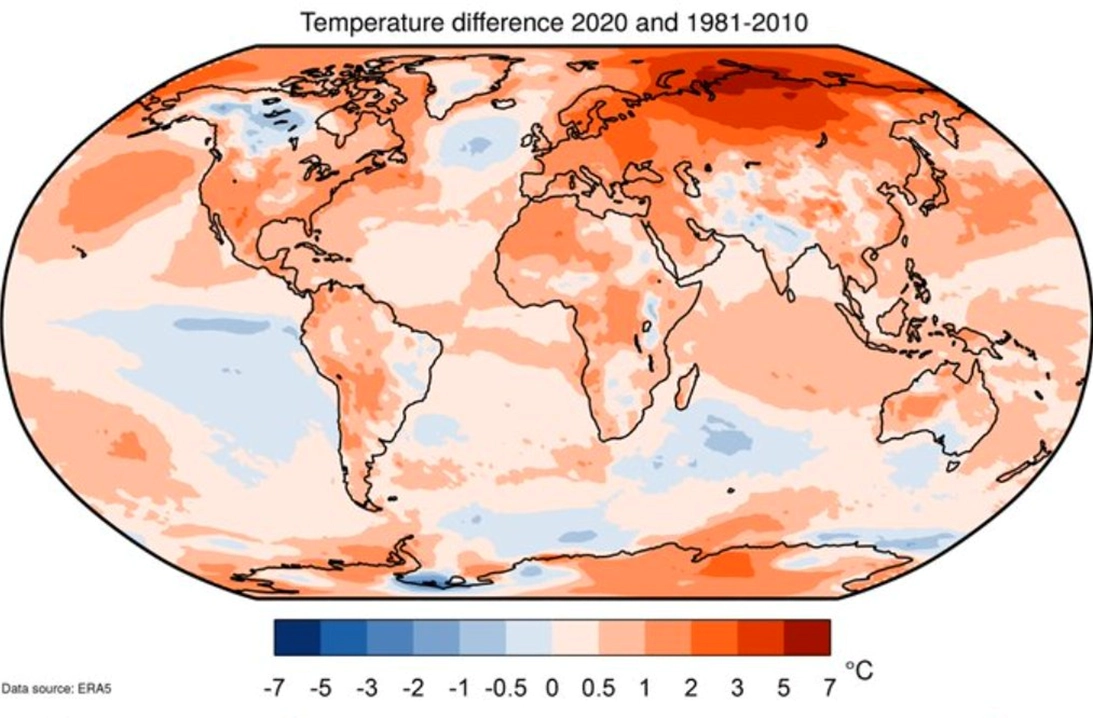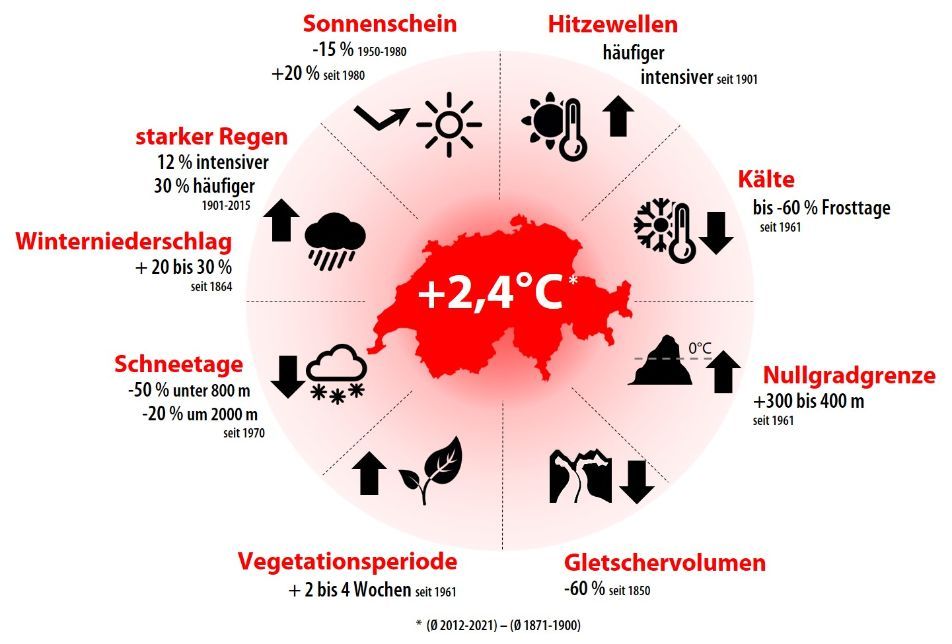Highest concentration of greenhouse gases in the history of humanity
The concentration of greenhouse gases (GHG), including CO2, have reached record levels in 2022 according to the World Meteorological Organization. It noted that methane, a more potent greenhouse gas than CO2, levels have increased the most in one year since measurements began 40 years ago. CO2 levels are further increasing, reaching a record 420 parts per million in May 2022.
As a result, we have reached CO2 levels that are at a level not seen in the entire history of the human species. The last time earth experienced similar CO2 levels was 4.1 million years ago, and the world was radically different than today. The reason for the increase of greenhouse gases in the atmosphere is due to burning fossil fuels like coal, oil, and gas.
The world already warmed 1.2 degrees Celsius
The burning of fossil fuels is the main reason for man-made climate change. Since preindustrial levels, the global average temperature has increased 1.1-1.25 degrees Celsius (°C). While the warming takes place very unevenly, the effects of the resulting climate change are causing increasingly alarming effects such as severe heatwaves, floods droughts and storms. As a result, the frequency and severity of heatwaves, precipitation and as a result floods, as well as droughts and wildfires is increasing. Natural habitats, cities and food production are increasingly at risk. These extreme weather events become increasingly likely with climate change and science can quicker attribute these events to the effects of climate change.
Switzerland already warmed 2.4 degrees Celsius compared to preindustrial levels
Johan Rockström, co-director of the Potsdam Institute for Climate Impact Research, calls Europe the planetary ground zero of climate change, as it warms much quicker than other parts of the world. The average temperature Switzerland has already increased approximately 2.4°C compared to preindustrial levels. As a result, there are many observable changes in Switzerland, mainly in the last decades. Since the 1980s there are 30% - 50% less snow days and 20 % increased sunshine. Since 1901 rainfall has been 30% more frequent and 12% more intense and heatwaves have become 200% more frequent. Since 1850, the glacier volume has decreased 60%.
Climate change is not a future and foreign concept but very much strikes home. Climate change mitigation cannot be further delayed. The Paris Agreement is the landmark agreement, which was adopted by all UN member states setting the goal to limit global warming to well below 2 degrees Celsius by the end of the Century, preferably to 1.5 degrees Celsius. The agreement is outlined by the UN Framework Convention on Climate Change (UNFCC). The decision-making body of the convention is the Conference of Parties or COP, where the implementation is reviewed and legal instruments for climate action are decided upon. The COP takes place almost every year, and in November 2022, the COP27 it is held in Sharm-el-Sheik, Egypt. Ahead of COP the countries update their Nationally Determined Contributions (NDCs) and as such their updated levels of climate action.

Average Temperatures in Switzerland (1864-2022) Source: MeteoSchweiz
New climate reports outline that the world will not meet the goal of limiting global warming to 1.5 degrees Celsius by the end of the Century. While some progress on climate action has been made, the current pledges and policies put the world on a path towards 1.8 – 2.7 degrees Celsius. The conference aims to ratchet up global climate action with the aim to put the world back on track.



